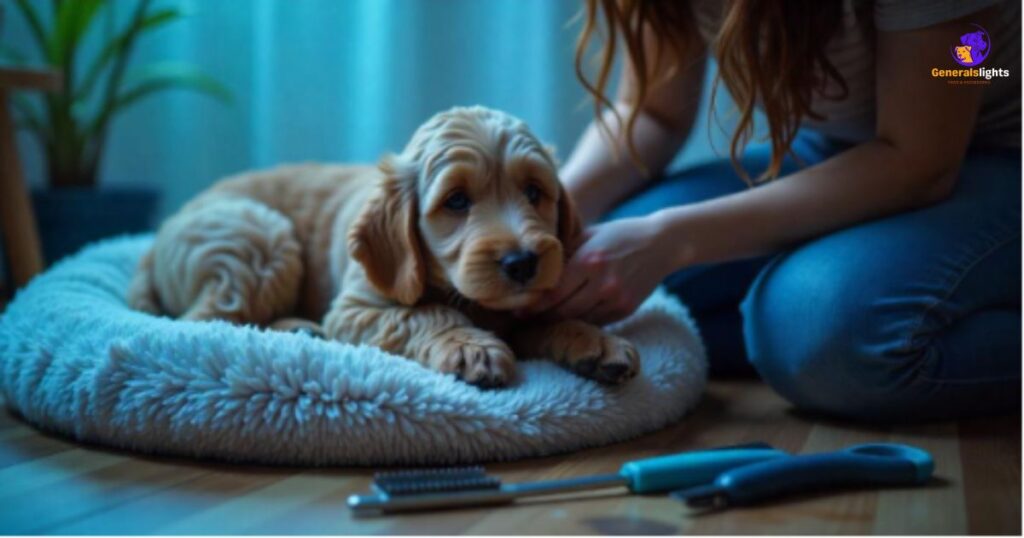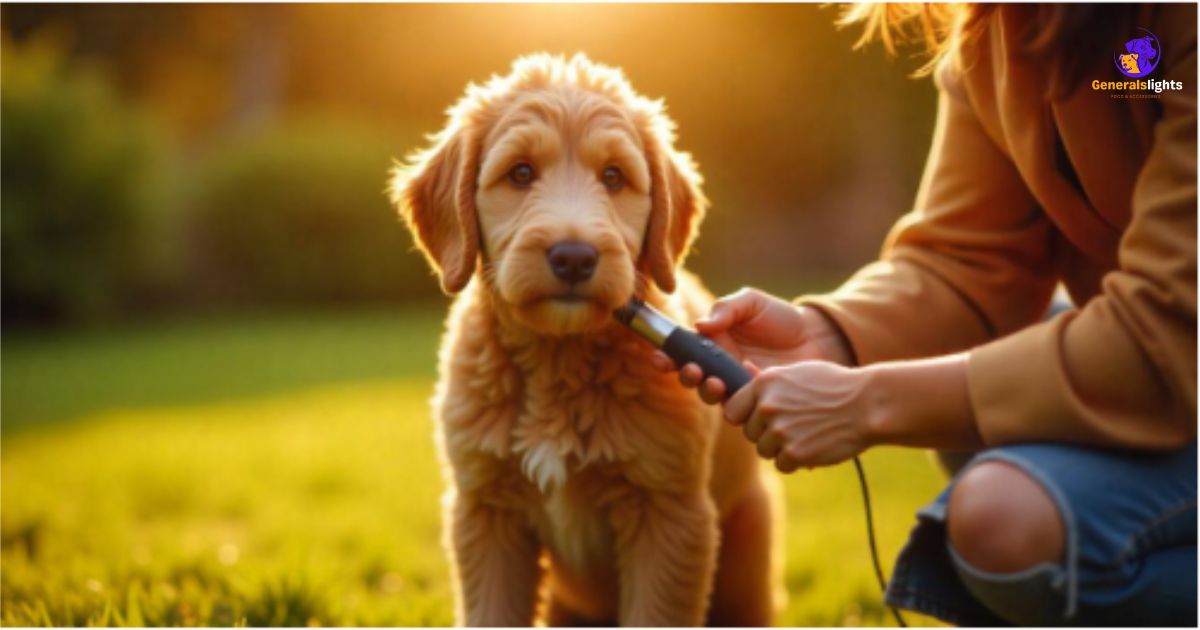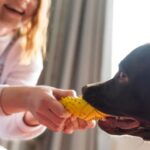A Labradoodle is a mix of a Labrador Retriever and a Poodle. Known for their friendly nature, they often have low-shedding coats.
Curious about how much a Labradoodle sheds? Many people love this breed for their low shedding. However, shedding can vary based on several factors. Let’s explore what you need to know!
Labradoodles generally shed less than other breeds, making them appealing to allergy sufferers. The amount a Labradoodle sheds can change with seasons and coat types. Regular grooming is key to managing shedding and keeping your home clean. By understanding how much a Labradoodle sheds, you can better prepare for this delightful companion!
How Big Does a Labradoodle Shed?
Labradoodles are often celebrated for their low-shedding coats, making them popular among allergy sufferers. However, the amount they shed can vary based on several factors, including their generation, coat type, and overall health.
Generally, first-generation Labradoodles, which inherit traits from both the Labrador Retriever and Poodle, tend to shed more than second or third generations. If your Labradoodle has a fleece or wool coat, you’ll likely notice less shedding compared to those with a straight or wavy coat.
To keep shedding at bay regular grooming is essential. Brushing your Labradoodle at least once a week helps remove loose hair and prevents matting. Additionally, bathing your dog occasionally can further reduce shedding while keeping their coat clean and healthy.
While no dog is completely hypoallergenic, understanding your Labradoodle’s shedding patterns can help you manage allergies and maintain a tidy home.
| Factor | Description | Impact on Shedding | Best Practices |
| Generation | First, second, or third-generation Labradoodles | Varies; 1st sheds more | Choose lower-shedding gen. |
| Coat Type | Fleece, wool, straight, or wavy | Fleece/wool sheds less | Regular grooming is key |
| Diet | Quality of food affects coat health | Poor diet may increase shedding | Opt for high-quality food |
| Health | Skin conditions or allergies can affect shedding | May lead to increased shedding | Regular vet check-ups |
| Seasonal Changes | Shedding may increase in spring and fall | Natural cycle | Adjust grooming frequency |
| Climate | Hot or humid weather can impact shedding | May increase shedding | Provide cooling options |
| Grooming Frequency | Regular brushing helps manage shedding | Reduces loose hair | Brush weekly or bi-weekly |
| Hydration | Adequate water intake keeps skin healthy | Improves overall coat health | Ensure fresh water daily |
By considering these factors, you can better manage your Labradoodle’s shedding and enjoy a clean and happy home.
Labradoodle Shedding Amounts
Labradoodles vary significantly in shedding amounts, largely depending on their generation and coat type. First-generation Labradoodles often have a mix of Labrador and Poodle traits, which can result in more shedding.
In contrast, second and third-generation Labradoodles typically have Poodle-like coats that shed less. Understanding these differences can help potential owners make informed choices about their new pet.

Regular grooming plays a crucial role in managing shedding. Weekly brushing helps remove loose hair and prevents mats, keeping the coat healthy. Bathing your Labradoodle every few months can also minimize shedding while maintaining skin health. By staying on top of grooming, you can significantly reduce the amount of hair in your home.
Factors Affecting Shedding
Generation
The generation of your Labradoodle directly impacts how much they shed. First-generation dogs tend to inherit more Labrador traits, leading to higher shedding. Meanwhile, later generations often exhibit the Poodle’s low-shedding characteristics. Knowing the generation helps set realistic expectations for grooming.
Coat Type
Labradoodles can have various coat types, including fleece, wool, and straight hair. Fleece and wool coats are known for their lower shedding, while straight hair may result in more loose hair. The coat type also influences grooming needs. Choosing the right coat type can make a difference in managing shedding.
Diet
A healthy diet significantly affects your Labradoodle’s coat and shedding. Poor nutrition can lead to skin issues, increasing shedding and affecting coat quality. Providing high-quality dog food can enhance coat health. Always consult your vet to ensure your dog gets the right nutrients.
Health
Underlying health issues can lead to excessive shedding. Skin conditions, allergies, and other health problems can impact how much hair your Labradoodle loses. Regular vet visits can help identify and address these issues early. Keeping your dog healthy is crucial for managing shedding.
Seasonal Changes
Many Labradoodles experience seasonal shedding, especially during spring and fall. As temperatures change, your dog may shed more to adapt. Increased grooming during these times can help manage the extra hair. Be prepared for changes in shedding patterns throughout the year.
Grooming Frequency
Consistent grooming can significantly reduce shedding. Regular brushing helps remove loose hair and prevents mats, which can lead to more shedding if neglected. Aim to brush your Labradoodle at least once a week. Adjust your grooming routine based on their shedding patterns.
About the Labradoodle Coat: An In-Depth Look
Labradoodles have unique coats that can range from straight to curly, depending on their genetics. Most owners appreciate the soft, hypoallergenic quality of the fleece or wool coat, which helps minimize shedding.
However, coat maintenance requires dedication, as proper grooming is essential for keeping it in top condition. Understanding the different coat types helps owners make informed grooming choices.

Caring for a Labradoodle’s coat involves regular brushing and occasional baths to maintain its health and appearance. Each coat type has its own specific needs, so being proactive in grooming can prevent issues like matting.
Owners should also be aware of potential skin conditions that may arise from neglecting coat care. With proper attention, your Labradoodle will showcase a beautiful and healthy coat.
| Coat Type | Characteristics | Shedding Level | Grooming Needs | Typical Lifespan | Health Considerations |
| Fleece | Soft, wavy, and curly | Low | Weekly brushing | 12-14 years | Prone to matting if neglected |
| Wool | Dense, tight curls | Very low | Bi-weekly brushing | 12-14 years | Requires regular grooming |
| Straight | Sleek and shiny | Moderate | Weekly grooming | 10-12 years | More prone to shedding |
| Combination | Mixture of textures | Varies | As needed | 10-14 years | May need tailored grooming |
| Hypoallergenic | Minimal allergens in coat | Low to moderate | Regular maintenance | 10-14 years | Monitor for skin allergies |
| Color Variations | Various shades including black, apricot, and chocolate | No impact on shedding | Same as above | 10-14 years | Maintain coat health regardless of color |
By understanding the Labradoodle coat, owners can make informed decisions about grooming and care, ensuring a happy and healthy pet.
Labradoodle Grooming Requirements
Grooming a Labradoodle is essential to keep their coat healthy and prevent matting. These dogs typically require regular brushing to manage shedding and maintain coat quality. Depending on the coat type whether it’s fleece, wool, or straight you may need to adjust your grooming routine.
Consistency is key; regular grooming not only keeps your Labradoodle looking good but also helps you spot any skin issues early on.
Bathing your Labradoodle every few months can help maintain cleanliness without stripping the natural oils from their skin. While you may not need to bathe them frequently, a good wash helps control odor and keeps their coat soft.
Additionally, professional grooming every few months can provide a more thorough clean and trim, ensuring your Labradoodle’s coat remains manageable. Keeping your grooming schedule regular will lead to a happier, healthier pet.
| Grooming Task | Frequency | Tools Needed | Purpose | Impact on Coat | Additional Notes |
| Brushing | Weekly | Slicker brush, comb | Remove loose hair | Reduces shedding | More often during shedding seasons |
| Bathing | Every 2-3 months | Dog shampoo, conditioner | Clean and refresh coat | Maintains coat health | Avoid over-bathing |
| Nail Trimming | Monthly | Dog nail clippers | Prevent overgrowth | Protects paws | Be cautious not to cut too close |
| Ear Cleaning | Monthly | Cotton balls, ear cleaner | Prevent infections | Maintains ear health | Look for wax buildup |
| Teeth Brushing | 2-3 times a week | Dog toothbrush, toothpaste | Promote dental health | Freshens breath | Start young for best results |
| Professional Grooming | Every 2-4 months | Grooming services | Thorough clean and trim | Keeps coat manageable | Choose a reputable groomer |
The 10 Labradoodle Grooming Tips
Grooming your Labradoodle doesn’t have to be overwhelming. With the right approach, you can keep their coat in excellent shape while building a bond with your furry friend. Here are ten practical grooming tips to make the process easier and more enjoyable. Implementing these tips will ensure your Labradoodle looks and feels great.
- Brush Regularly: Aim to brush your Labradoodle weekly to prevent mats and reduce shedding. This simple routine helps keep their coat healthy and shiny.
- Choose the Right Tools: Invest in a good slicker brush and comb designed for Labradoodles. The right tools make grooming more effective and enjoyable.
- Establish a Routine: Stick to a regular grooming schedule to keep your Labradoodle’s coat manageable. Consistency makes the process easier for both of you.
- Bathe Sparingly: Bathe your Labradoodle every 2-3 months to avoid stripping natural oils. This practice keeps their coat clean without over-drying their skin.
- Trim Nails Monthly: Keep your Labradoodle’s nails trimmed to prevent discomfort and overgrowth. Regular nail care supports their overall health and mobility.
- Clean Ears Regularly: Check and clean your Labradoodle’s ears monthly to prevent infections. A cotton ball and dog-safe cleaner work wonders.
- Brush Teeth Frequently: Aim to brush your Labradoodle’s teeth 2-3 times a week. Good dental hygiene prevents bad breath and oral issues.
- Seek Professional Help: Consider professional grooming every few months for a thorough clean and trim. This can simplify your grooming routine.
- Watch for Skin Issues: Regular grooming helps you spot any skin problems early. Keeping an eye on their skin ensures prompt treatment.
- Make It Fun: Turn grooming into a bonding experience by using treats and praise. A positive approach makes your Labradoodle more comfortable with the process.
By following these grooming tips, you’ll keep your Labradoodle looking great and feeling healthy. Happy grooming!
A Word About Hypoallergenic Dogs
Hypoallergenic dogs, like Labradoodles, are popular among allergy sufferers due to their low-shedding coats. While no dog is completely hypoallergenic, these breeds produce fewer allergens, making them easier to tolerate. Understanding how to care for hypoallergenic dogs can enhance your pet ownership experience.
Owners of hypoallergenic dogs should focus on regular grooming and cleaning to minimize allergens in the home. By maintaining a consistent grooming schedule, you can help keep your pet’s coat healthy while reducing dander and loose hair. This proactive approach benefits both you and your furry friend.
Cutting Down on Shedding and Keeping Your Home Fur-Free
To cut down on shedding, regular grooming is essential. Brush your Labradoodle weekly to remove loose hair and prevent matting, which can lead to increased shedding. This practice not only keeps your home fur-free but also enhances your dog’s coat health.
Creating a cleaning routine helps maintain a fur-free environment. Use lint rollers, vacuum regularly, and wash your pet’s bedding frequently. These simple habits keep allergens and pet hair at bay, ensuring a comfortable living space for everyone.
What Not to Do
Avoid neglecting your Labradoodle’s grooming needs, as this can lead to excessive shedding and matting. Skipping regular brushing makes it harder to manage your dog’s coat, resulting in more hair around your home. Consistent grooming helps keep your Labradoodle’s coat healthy and reduces the amount of fur you have to clean.
Don’t use harsh chemicals or inappropriate shampoos when bathing your hypoallergenic dog. These products can irritate their skin and worsen shedding. Always opt for gentle, dog-specific products to maintain your Labradoodle’s coat and overall health.
FAQs
How much does a Labradoodle shed?
Labradoodles typically shed less than many other breeds. Their shedding can vary based on coat type and grooming routine.
Do Labradoodles need regular grooming?
Yes, regular grooming is essential for Labradoodles. Weekly brushing helps prevent mats and reduces shedding.
Are Labradoodles hypoallergenic?
Labradoodles are considered hypoallergenic. They produce fewer allergens, making them suitable for allergy sufferers.
How often should I bathe my Labradoodle?
Bathe your Labradoodle every 2-3 months. This keeps their coat clean without stripping natural oils.
What grooming tools do I need for a Labradoodle?
Invest in a slicker brush and a comb. These tools help manage your Labradoodle’s coat effectively.
Conclusion
Understanding how much a Labradoodle sheds helps you manage grooming better. Regular grooming reduces shedding and keeps your home clean.
By following the grooming tips, you can maintain a healthy coat for your Labradoodle. Consistency is key for a happy, fur-free home.
- Also Read Must:
- Top Reasons to Adopt a Bunny and What You Need to Know
- How Much Does a Catahoula Leopard Dog Cost in 2024?

Emerson is an expert in the world of pets, specializing in understanding diverse breeds, nutrition, and health. His deep knowledge ensures your pets receive the best care, from balanced diets to top-notch health advice, keeping them at their happiest and healthiest.











